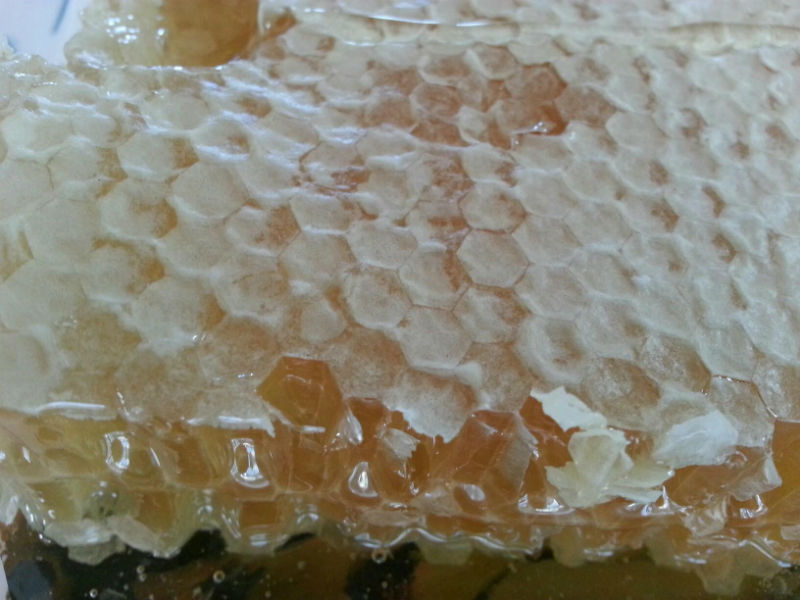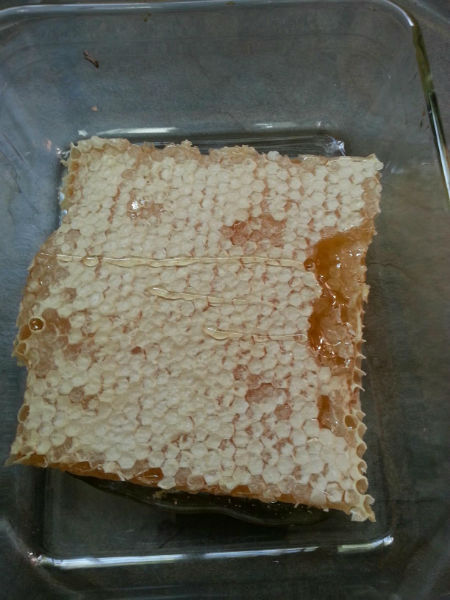We couldn’t stand the suspense any longer. Our bees were filling up frame after frame of their hive with golden nectar and we wanted to share the experience. So we donned our suits and veils and harvested a single frame for ourselves. Oh, sweet goodness!
The frame was heavy with precious cargo, with each hexagonal cell covered in wax capping to let us know that it’s ready. Open cells of comb are not ready; bees wait until the moisture content of the nectar drops before they cover it with wax. Unlike honey, which never spoils, nectar does, so it must either be eaten right away, or not at all.

It’s a tough job but somebody’s gotta do it.
We cut the comb from the frame and decided not to crush it to extract the honey. Instead we opted to enjoy it as a whole. Honeycomb can be eaten, or at least chewed and spit out if you prefer. A thin slice on a plate takes any dessert to the next level.

Our first harvest was almost clear in color, but floral to taste. We detected hints of orange blossom, but since bees can travel up to six miles for nectar and pollen, we have no way of knowing which plants made up this golden gift.
Our hive currently has 4 layers, or supers. The first 2 are brood boxes (where the bees live and raise young), the next super is for honey (for them, not for us). Bees need at least 40 pounds of honey to get through winter, so it’s important to leave the third super alone. We pulled a frame from the fourth super because it was almost full.

Soon we’ll add a fifth super to last through the summer, and we’ll most likely harvest an entire super at the end of summer or early fall. It’s remarkable to see how active the bees are, and how our garden has benefited from these busy bodies.


Pingback: First Honey Harvest - Part 2 | Gardenerd
YAY BEES! <3